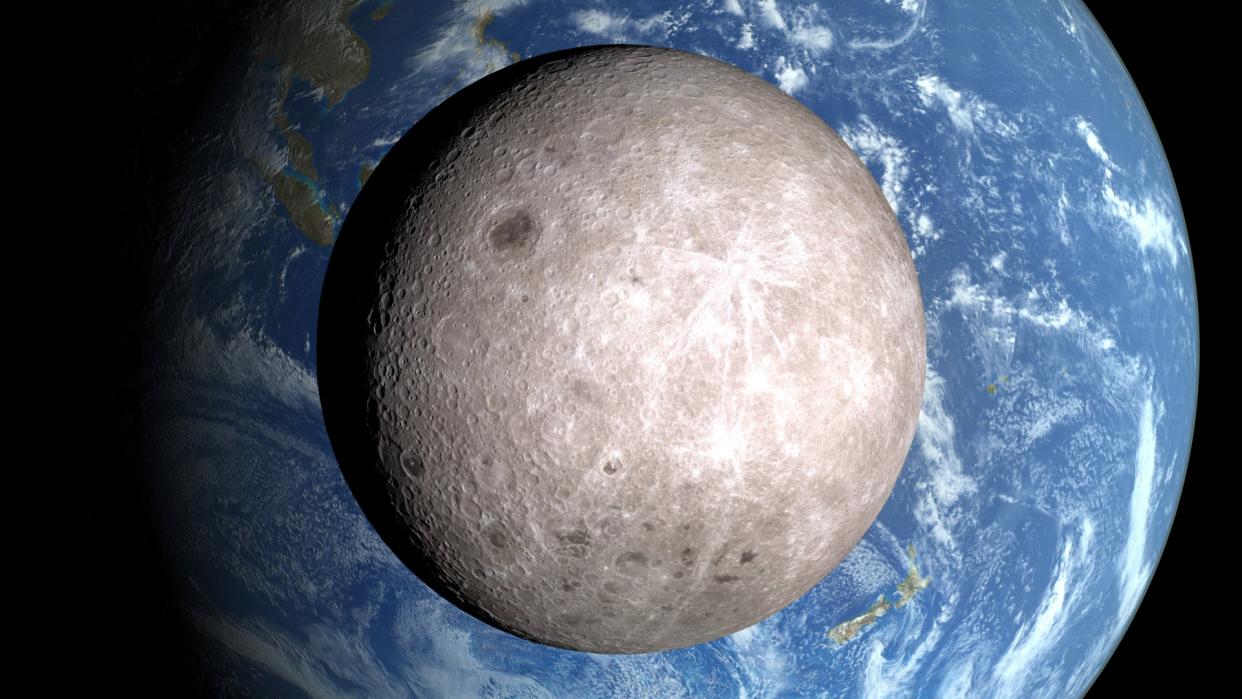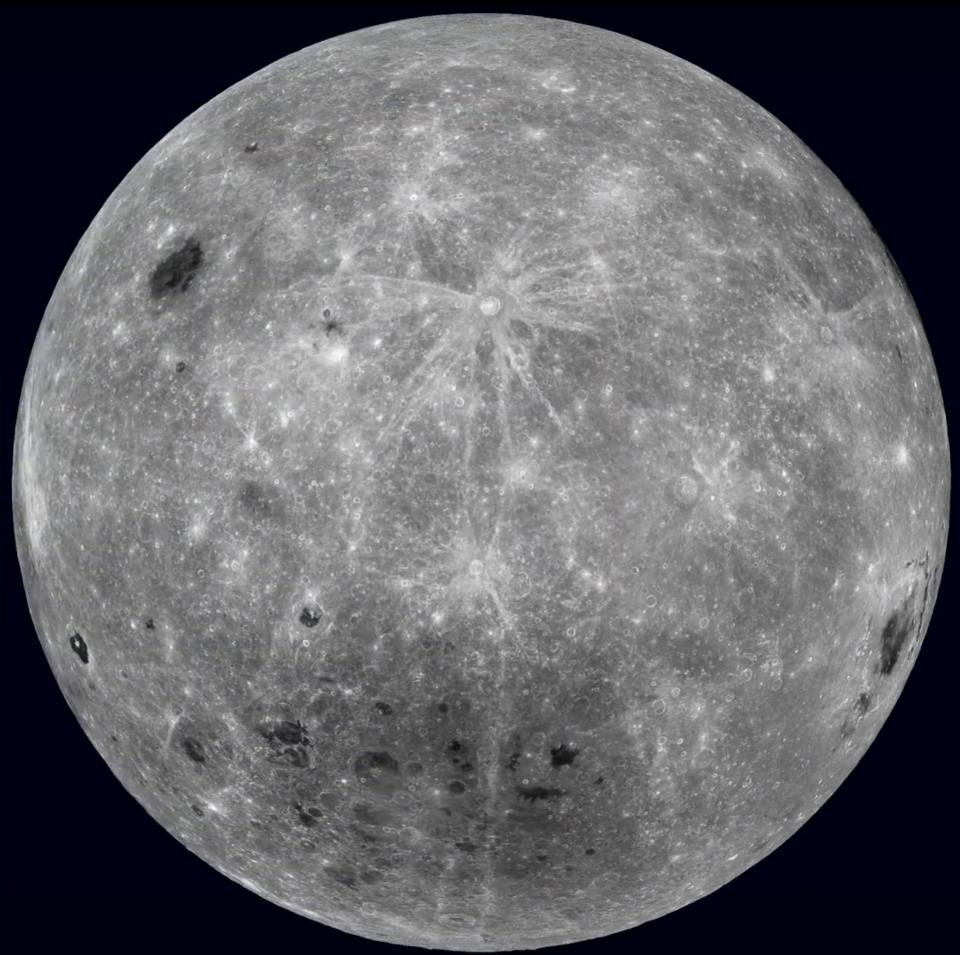Why can't we see the far side of the moon?

Some people see a face in the moon; others see a rabbit or a toad. But regardless of what you see on the lunar surface, we all view the same side of our natural satellite. So why don't we ever see the far side of the moon?
From Earth, it appears as if the moon doesn't rotate at all, but it does spin on its axis, just like Earth does. However, the moon is tidally locked to our planet. That means it takes just as long for the moon to rotate about its axis as it does to orbit Earth — roughly one month.
Tidal locking occurs thanks to gravitational attraction between two celestial bodies. The attraction between the moon and Earth distorts both bodies and stretches them slightly toward each other, into a shape resembling an American football, said Robert Tyler, a physical oceanographer at NASA's Goddard Space Flight Center. "That would be the shape if all the fluids and solids could respond instantaneously," Tyler told Live Science.
But the fluids and solids that make up both the moon and Earth can't respond instantaneously. When the two bodies pull on each other, they create friction that slows the rotation of both objects.
Related: Will Earth ever lose its moon?
For example, "the moon is pulling on the ocean, so part of the ocean is trying to propagate in a way that would, ideally, create a bulge that was staying right under the moon," Tyler said. But "the tides are dragging across the seafloor and trying to get around continents." It takes time and energy to move the tidal bulge — the end of the football — in response to the moon's motion around our planet.

The same thing happens as rocks on the moon shift in response to Earth's pull. "Rocks are not elastic. When they get flexed, the energy is going to be used up," Matija Ćuk, an orbital dynamicist at the SETI Institute, told Live Science. "Energy has to come from somewhere, so it comes from the rotation of the body." The moon's rotation relative to Earth slowed down, until it eventually reached zero.
RELATED MYSTERIES
—What is the 'man in the moon,' and how did it form?
—Why can we sometimes see the moon in the daytime?
—Which animals will be the first to live on the moon and Mars?
The moon is also slowing Earth's rotation. Half a billion years ago, Earth might have had a 21-hour day, Tyler said. If given enough time, the moon could slow our planet's rotation enough that it could become tidally locked to the moon, and only one side of our planet would ever see the moon. But that wouldn't happen for another 50 billion years — long after the death of the sun about 5 billion years from now.
Although we'll never see the far side of the moon directly from Earth, spacecraft have photographed it. Soviet spacecraft Luna 3 captured the first images of the far side in 1959. Since then, several other spacecraft have snapped photos of the lunar far side, including NASA's Lunar Reconnaissance Orbiter and China's Chang'e 4, the first spacecraft to land on the far side of the moon.
The images show that the moon's far side is covered in craters and has fewer large, dark spots — called maria — than the near side. With fewer maria, it's harder to pick out shapes like a face or a rabbit in the lunar far side, but there's still plenty to see.

